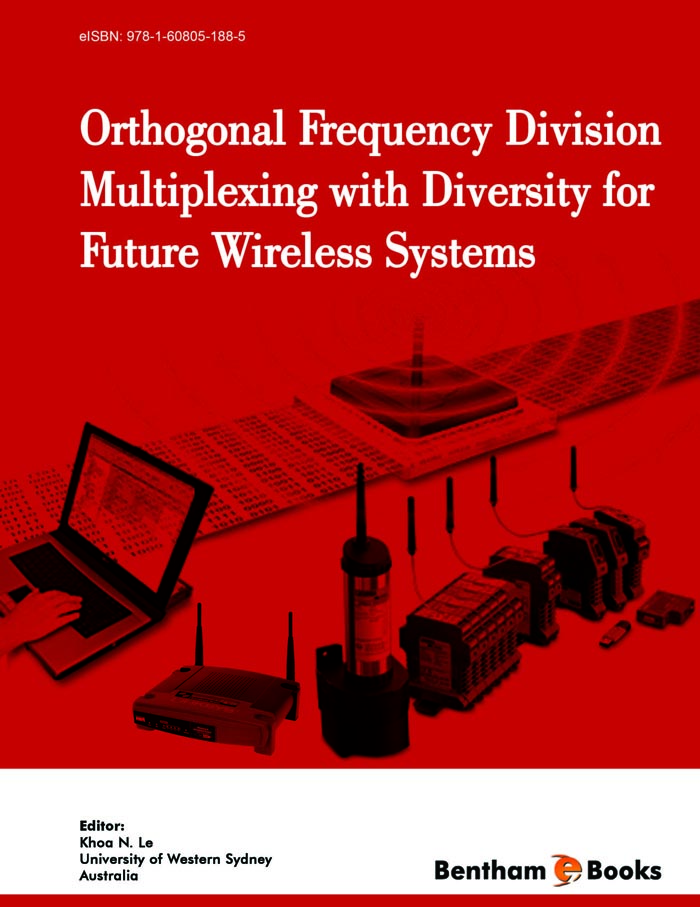This book was motivated by the fast emerging advantage of orthogonal frequency division multiplexing (OFDM) and the attention it has received in recent years. The need for high-speed networks initiates new research directions on multi-carrier modulation techniques which will be employed in future wireless communications systems. OFDM was invented in the 60’s via the work of Cimini and others. While at the time the idea was new and innovative, it was not fully utilised till now. The scenario is similar to the advancement of digital signal processing. Thinking back to the 90’s when The Internet was thought to be a distant technology and “brick-size” analog mobile phones were the fashion of the day! Back in those days, maybe we all thought that OFDM was not possible because of its complexity and there was no market for it. However, after nearly four decades of thinking and rethinking, people started realising that OFDM could be and really can be the prime candidate for the next generation of wireless communications networks. Recently, extensive research has been performed to explore and reveal new insight into OFDM. Not only that, new ideas and new research directions have been introduced and initiated. A quick search in the INSPECT database can reveal some interesting facts. From 1990 to 2010, the number of OFDM journal papers is 4, 522, comparing with 2, 888 from 2005 to 2010, and 501 for the year to date. This means that the number in the last five years is about 2.5 times that from 1990 to 2010 which shows the research intensity around the world on OFDM and hence its importance and relevance to our lives.
OFDM is a multi-carrier modulation technique in which inter relationships among the sub-carriers significantly affects system performance. Orthogonality among the subcarriers is the key to avoid performance degradation. In other words, inter-carrier interference is a major factor that should be considered when analysing OFDM system performance. Inter-carrier interference is therefore one of the draw backs of OFDM systems. Not only that, this interference also creates complicated scenarios and thus it is much more difficult to estimate bit error rates of OFDM systems than those of single-carrier systems.
Diversity is a technique that is mainly employed for receivers to combat fading, hence improving signal detection, and ultimately reducing bit error rates in communications systems. While bettering system performance, the only draw back of diversity is the redundancy of sending replicas of signals or data symbols over time, creating wasted overhead. Because of the randomness of fading transmission channels, diversity has been shown to be an effective technique combating fading.
Combining OFDM and diversity to improve system performance has been thought of for sometime by researchers around the world. Because of inter-carrier interference, implementing diversity on OFDM systems more than one-fold super-imposing system complexity and may make these types of communications systems unpractical. However, the human race has always been optimistic and we all hope that the scenario of the 90sbrick- size-mobile-phone example repeats itself. As the result of the marriage of OFDM and diversity, complicated mathematics along with encouraging results have been born. Concurrently, multiple input multiple output (MIMO) OFDM has also been extremely popular lately because of the need for high speed data rates and network expansion. In a way, the MIMO-OFDM concept is a diversity per se and is also treated in this book.
To add to the healthy literature on OFDM and diversity in recent years, this book hopes to contribute some efforts via a collection of fine papers written in the field of OFDM and wireless communications. The book has a variety of chapters dealing with (i) OFDM and MIMO-OFDM technical challenges, (ii) overview on recent work, and (iii) diversity and hybrid diversity techniques. Orthogonal frequency division multiple access (OFDMA) is also studied in Chapters 8, 11 and 12. The book is organised as follows:
Chapter 1 studies the effects of spatial diversity on synchronisation of multiple input multiple output OFDM systems, in particular, the effects of timing. Receiver diversity is also assessed.
Chapter 2 gives fundamental insight into inter-carrier interference (ICI) and interblock interference (IBI). ICI and IBI cancellation methods are proposed and validated.
These results can be further developed to reduce bit error rates of OFDM and OFDMA systems.
Chapter 3 gives channel estimation techniques using specially-designed pilot sequences. The least squares estimation method is employed. Simulated bit error rates are presented.
Chapter 4 gives a detailed study on coded OFDM systems with clipping. In-depth theoretical analyses are rendered.
Chapter 5 is devoted to the study the effectiveness of transmit diversity for MIMOOFDM systems. Practical and theoretical analyses are given.
Chapter 6 gives a thorough overview on various OFDM systems. New results on applying diversity to OFDM systems are given.
Chapter 7 examines the effects of multi-user and spatial diversity on co-channel interference in OFDM systems.
Chapter 8 examines the effectiveness of multi-user diversity on OFDM systems with limited feedback. Simulation results are given.
Chapter 9 is a collection of different adaptive modulation techniques which have been employed in the literature from conventional modulation to hybrid conventional modulation utilising diversity and power loading.
Chapter 10 gives a preliminary study on hyperbolic and Gaussian scattering channels in mobile OFDM systems in a fading environment. Theoretical and simulation results are given.
Chapter 11 proposes beamforming algorithms for mobile WiMAX MIMO OFDM systems. Detailed simulation results are given.
Chapter 12 gives a generic overview on the planning of OFDM and OFDMA cellular systems. Effects of cell radius and number of sub-carriers on system performance are studied.
Chapter 13 concludes the book and briefly gives some thought on future developments of OFDM.
Further derivations are given in Appendices A to G for Chapters 2, 8 and 11.
L. Hanzo
School of ECS
University of Southampton
UK

